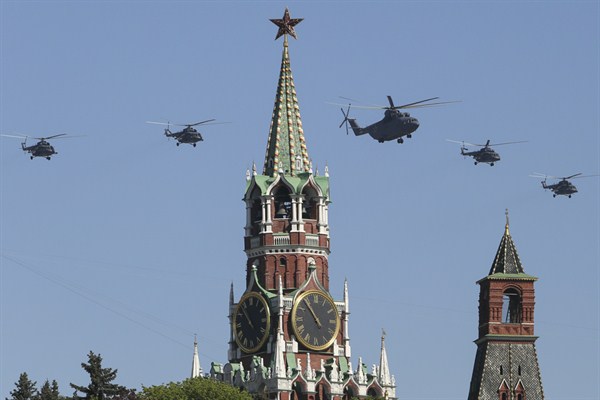Russia’s military has experienced a remarkable recovery during the past decade. This is most evident in the success of Russia’s swift occupation of Crimea last year and ongoing support for separatist forces in eastern Ukraine. Equally impressive, if less visible, is the rebound of the country’s military-industrial complex, referred to by the Russian initials VPK, which suffered heavily from the break-up of the Soviet Union’s integrated defense industries and the Russian government’s budgetary difficulties during the 1990s.
In its worst years, under former President Boris Yeltsin, the VPK was unable to manufacture more than a few weapons systems each year. Many of these were sold abroad to generate export revenue. Russia’s shipyards struggled to maintain and modernize Soviet-era vessels while mothballing plans to build new capital ships. Many defense firms either converted to civilian production or went out of business.
But the Russian military-industrial complex has experienced a phoenix-like recovery in the last few years. Whereas until recently the VPK had mostly been upgrading Soviet-era designs with more modern technologies, it is now providing the Russian armed forces with new-generation systems, including the Bulava submarine-launched ballistic missile, the T-50 stealth plane and the T-14 Armata tank. Meanwhile, it has propelled Russia in recent years to second place among global arms sellers. Last year, Russian defense firms sold more than $15 billion worth of weapons to over 60 countries, a slight increase from previous years.

